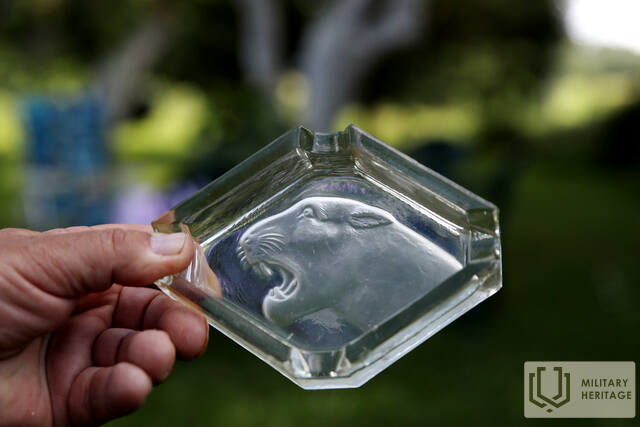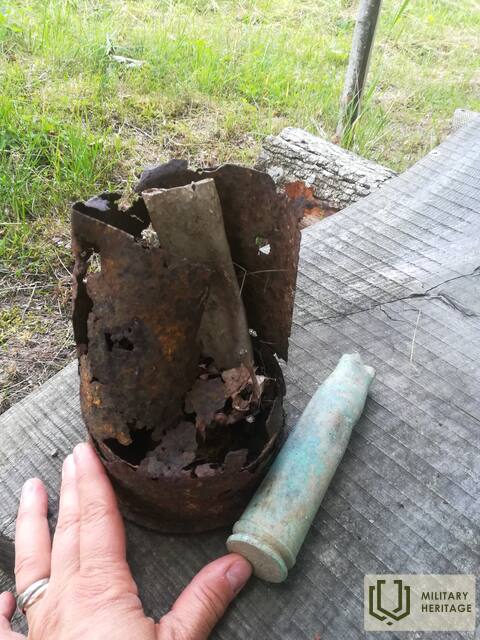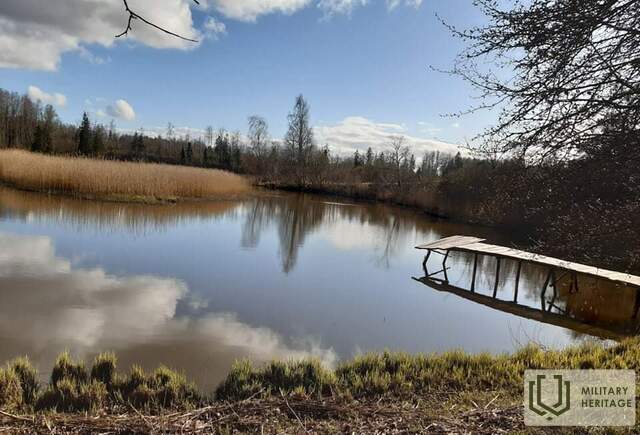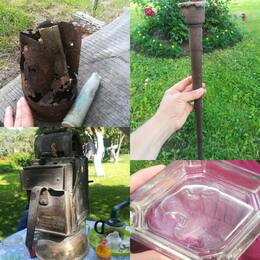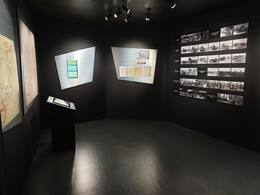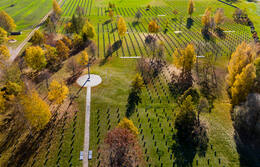Peleninė su panteros galva iš vokiečių įtvirtinimų linijų
Krotės apylinkėse buvo įsikūrusios paskutinės armijų grupės „Kurzeme“ įtvirtinimų linijos, kuriose rasta daug su Antruoju pasauliniu karu susijusių objektų.
Krotės apylinkėse buvo įsikūrusios paskutinės armijų grupės „Kurzeme“ įtvirtinimų linijos, kurias vokiečių kariuomenė išlaikė iki pat kapituliacijos 1945 m. gegužės 8 d. Todėl šiose vietose rasta daug su Antruoju pasauliniu karu susijusių objektų. Vienas išskirtinis egzempliorius buvo rastas vokiečių armijos bunkeriuose ir apkasuose prie Vartajaus upės, kai savininkai, rausdamiesi žemėje, pastebėjo į kvadratą panašų stiklinį daiktą. Paaiškėjo, kad tai buvo peleninė su panteros galvos graviūra apačioje.
Šiandien Krotėje saugoma privati Mario Ūtėnos kolekcija, taip pat galima pamatyti vokiečių apkasus ir bunkerius palei Vārtaja upę. Apkasuose vis dar gali būti sprogstamųjų objektų.
Susijusi laiko juosta
Susijusios vietos
Ezerės kraštotyros saugykla „Muitas Nams“
Ezerės muitinė yra Ezerėje, netoli Saldaus-Mažeikių plento, Latvijos ir Lietuvos pasienyje. 1945 m. gegužės 8 d. šiame pastate buvo pasirašytas vadinamojoje „Kuršo kišenėje“ apsuptų Vokietijos armijos dalinių „Kurzeme“ (Kurlandas) kapituliacijos aktas. Manoma, kad Antrasis pasaulinis karas iš tikrųjų baigėsi Ezerėje. Muitinėje yra ekspozicija, kurioje aprašomi Antrojo pasaulinio karo pabaigos įvykiai, ir eksponatai, kuriuose išsamiai aprašoma Ezerės parapijos istorija nuo seniausių laikų iki šių dienų. 1945 m. gegužės 7 d. rytą Leningrado fronto vadas maršalas L. Govorovas išsiuntė armijų grupės „Kurzeme“ vadovybei ultimatumą sudėti ginklus. Kapituliacijos aktą susijusios šalys pasirašė gegužės 8 d., jame išsamiai aprašyta perdavimo tvarka, ginklų surinkimo punktai, pateiktini dokumentai ir informacija bei kitos praktinės priemonės.
Saldaus vokiečių kareivių kapinės
Saldaus vokiečių kareivių kapinės yra prie Saldaus–Ežerės plento. Kapinėse, užimančiose 8 hektarų plotą, yra apie 25 000 vokiečių kareivių, taip pat kai kurių Latvijos legionierių palaikai. Perlaidojimai vyksta nuo 1997 m.
Nuo gegužės 1 d. iki spalio 1 d. memorialiniame kambaryje galima apžiūrėti parodą apie Kuršo mūšius. Šiuo laikotarpiu memorialinis kambarys dirba darbo dienomis nuo 9:00 iki 17:00 val., o šeštadieniais ir sekmadieniais kapinėse dirba ir gidas. Taip pat galima susipažinti su Saldaus vokiečių kareivių kapinėse palaidotų ir visoje Latvijoje žuvusių kareivių sąrašais.




